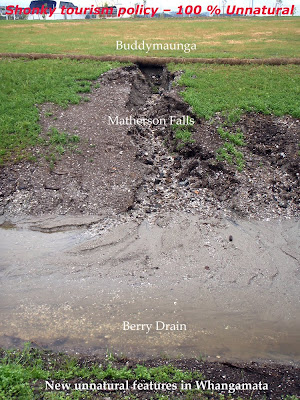
It has been reported that the noxious weed nutgrass has been planted on land owned by the Thames Coromandel District Council and the Department of Conservation (i.e. ratepayer and taxpayer). Some of the infested land runs along the shoreline others along side residential property.
The District Council first noticed the nutgrass in late November 2009. On the 2nd of December the District Council asked the marina company, in writing, to eradicate it and the marina company and HeB the contractors agreed to do this.
It is the Regional Council that is responsible for the bio-security of Whangamata. Until the 22nd of December the Chairperson of the Regional Pest Management Committee knew nothing of the bio-security breach, though he is in the marina company. On hearing of the situation he informed a staff member who said the first step would be to positively identify the plant.
Subsequent research from AgResearch and NIWA state that the plant is Purua grass or Bolboschoenus sp. A native plant of wetlands and coastal areas.
Maybe the plant should have been checked at the beginning by the contractors and the marina company.






